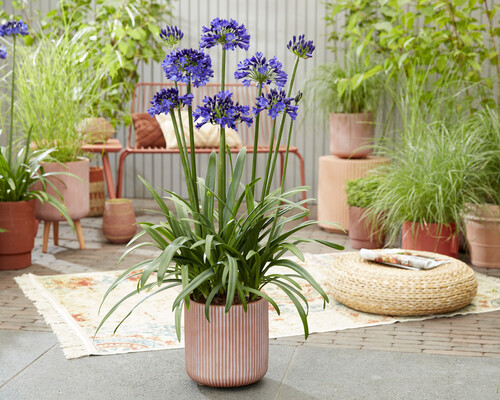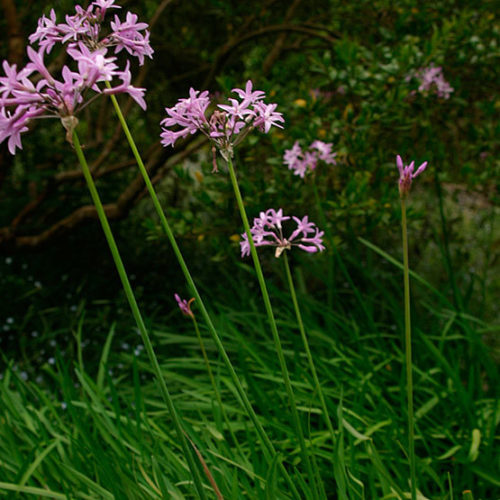Agapanthus Growing Conditions: Soil, Sunlight, and Watering
Agapanthus Growing Conditions: Soil, Sunlight, and Watering
Blog Article
Releasing the Secret to Effective Agapanthus Farming: Tips and Techniques for a Flourishing Garden
In the realm of gardening, growing agapanthus efficiently calls for a tactical strategy that incorporates different aspects of plant treatment. By recognizing the nuances of agapanthus growing, one can create an environment where these plants flourish and grow perfectly.
Growing Agapanthus: Ideal Practices
When growing Agapanthus, proper soil prep work is necessary for ensuring effective development and development of these attractive flowers. Agapanthus, frequently referred to as Lily of the Nile or African lily, thrives in well-draining dirt with a slightly acidic to neutral pH degree - Agapanthus. Before planting, it is important to amend heavy clay soils with natural matter such as garden compost or peat moss to enhance drainage and supply important nutrients for the plants
To grow Agapanthus, pick a location that receives full sunlight to partial color, as this will promote healthy and balanced growth and abundant flowering. Dig an opening two times the size of the plant's origin round and position the Agapanthus at the same depth it was previously expanding. Carefully backfill the opening with dirt, weighing down strongly to remove any type of air pockets around the origins.
Water the recently planted Agapanthus thoroughly and proceed to maintain the soil evenly wet, especially during the plant's active expanding period. Agapanthus. Using a well balanced plant food once a month can further sustain the plant's development and flowering. By following these finest practices for planting Agapanthus, you can create a stunning screen of these fascinating blossoms in your garden
Suitable Dirt Issues for Agapanthus
For optimum development and flowering success of Agapanthus plants, ensuring the soil problems are perfect is vital. Agapanthus prospers in well-draining soil with a somewhat acidic to neutral pH level ranging from 6.0 to 7.0. This sort of dirt enables for adequate water drain, stopping waterlogging which can result in root rot. To boost dirt water drainage, think about adding raw material such as garden compost or peat moss when preparing the growing site. Furthermore, Agapanthus favors dirt that is rich in nutrients, so incorporating a well balanced fertilizer throughout the growing period can advertise healthy development and lively blooms.

Watering and Feeding Tips
To guarantee healthy and balanced growth and vibrant blooms, appropriate watering and feeding methods are crucial for effective Agapanthus growing. Agapanthus plants profit from routine watering, particularly during the growing season.
When it comes to feeding Agapanthus, a well balanced plant food with equal parts nitrogen, phosphorus, and potassium can be used in the springtime to promote healthy growth and blooming. Slow-release plant foods are optimal for offering nutrients gradually over a prolonged period. Avoid over-fertilizing, as this can lead to too much vegetation growth at the expense of blossoms.
Furthermore, integrating organic issue like garden compost into the dirt can improve nutrient levels and enhance soil framework, helping in the overall health and wellness of the Agapanthus plants. By following these watering and feeding suggestions, gardeners can guarantee their Agapanthus plants prosper and produce stunning display screens of flowers.
Trimming and Deadheading Techniques
Proper pruning and deadheading techniques play a crucial duty in maintaining the wellness and looks of Agapanthus plants, complementing the necessary methods of watering and fertilizing for effective cultivation. Trimming Agapanthus involves eliminating invested pop over here flower heads, yellowing or dead fallen leaves, and general shaping of the plant to advertise far better development. Deadheading, the process of getting rid of faded blossoms, not only boosts the plant's appearance however likewise motivates further blooming.
When deadheading Agapanthus, it is a good idea to trim off the flower stem at the base utilizing sharp, click here now tidy shears. This procedure redirects the plant's power from seed manufacturing back into root and vegetation development, advertising a much healthier and much more robust plant. Routine deadheading can expand the blooming period of Agapanthus and stop self-seeding, which can lead to overcrowding.
In terms of pruning, Agapanthus normally advantages from a light trim after blooming to tidy up the plant and encourage fresh development. Reducing back the invested blossom stems and removing any dead or damaged foliage helps keep the plant's vigor and overall appearance. However, it is important to avoid cutting right into the crown of the plant, as this can deteriorate its wellness.

Protecting Agapanthus From Vermins and Diseases
Implementing reliable pest and illness management methods is crucial to safeguarding the health and wellness and vigor of Agapanthus plants in growing. One usual parasite that affects Agapanthus is the Agapanthus borer, a caterpillar that tunnels into the plant, triggering damage to the fallen leaves and blossoms.
Along with parasites, Agapanthus are susceptible to illness such as root rot and fungal fallen leave areas. These issues can usually be prevented by making sure correct drain and preventing overwatering. If signs of condition show up, impacted components of the plant must be immediately removed to stop further spread. Fungicides may additionally be used as a therapy action, adhering to the maker's instructions thoroughly. By remaining cautious and addressing insect and illness problems immediately, gardeners can aid their Agapanthus thrive and flourish.

Final Thought
To conclude, effective growing of agapanthus calls for proper growing techniques, optimal dirt problems, sufficient watering and fertilizing, normal pruning and deadheading, and security from pests and illness. By following these tricks and suggestions, garden enthusiasts can ensure a prospering garden full of beautiful agapanthus flowers. Agapanthus. Bear in mind to keep regular care and focus to detail to promote the wellness and longevity of these sensational plants
When growing Agapanthus, correct dirt prep work is necessary for guaranteeing effective growth and advancement of these stunning blossoms.Water the freshly planted Agapanthus completely and proceed to maintain the dirt equally wet, especially during the plant's active growing season.For ideal growth and flowering success of Agapanthus plants, guaranteeing the soil conditions are suitable is critical. When growing or transplanting Agapanthus, ensure the soil is well-prepared to give the essential structure next page for the plants to develop themselves efficiently. One usual insect that impacts Agapanthus is the Agapanthus borer, a caterpillar that tunnels right into the plant, creating damage to the leaves and blossoms.
Report this page